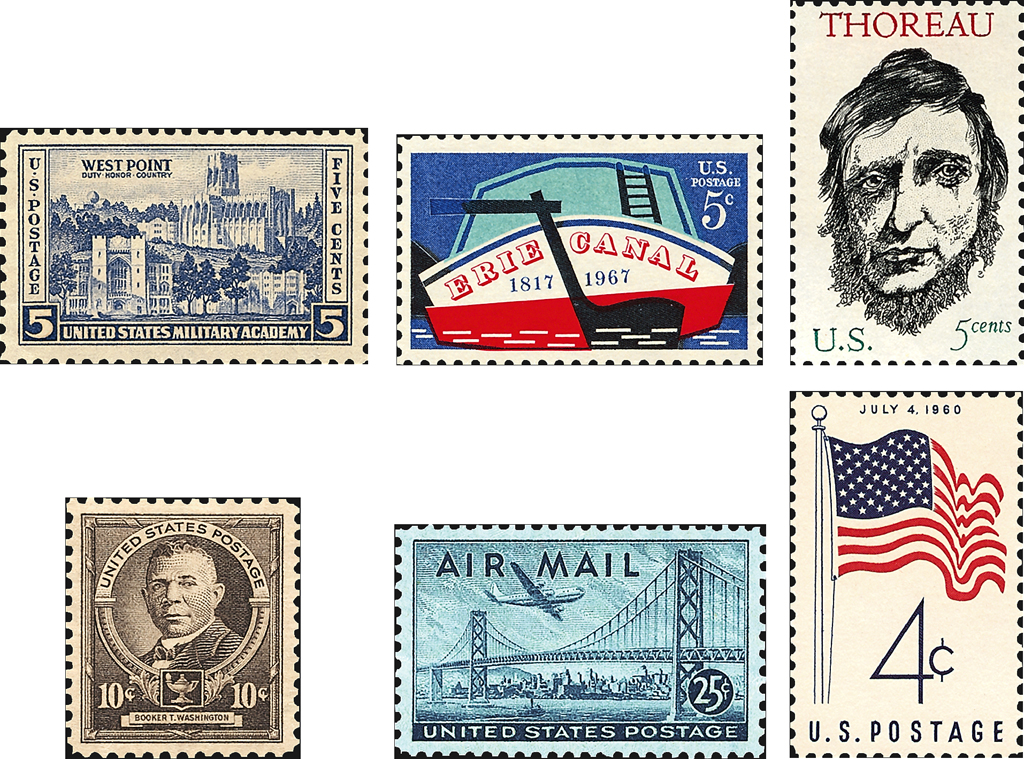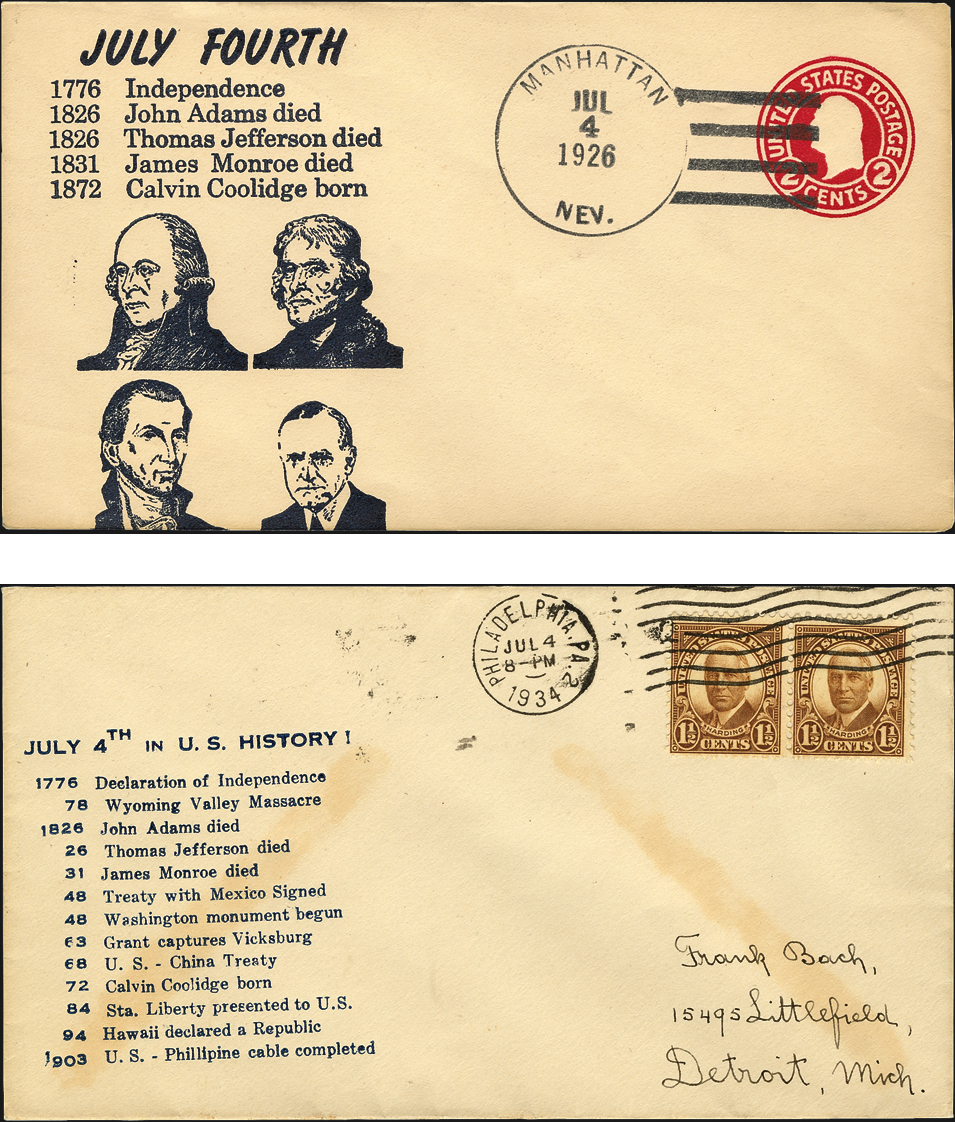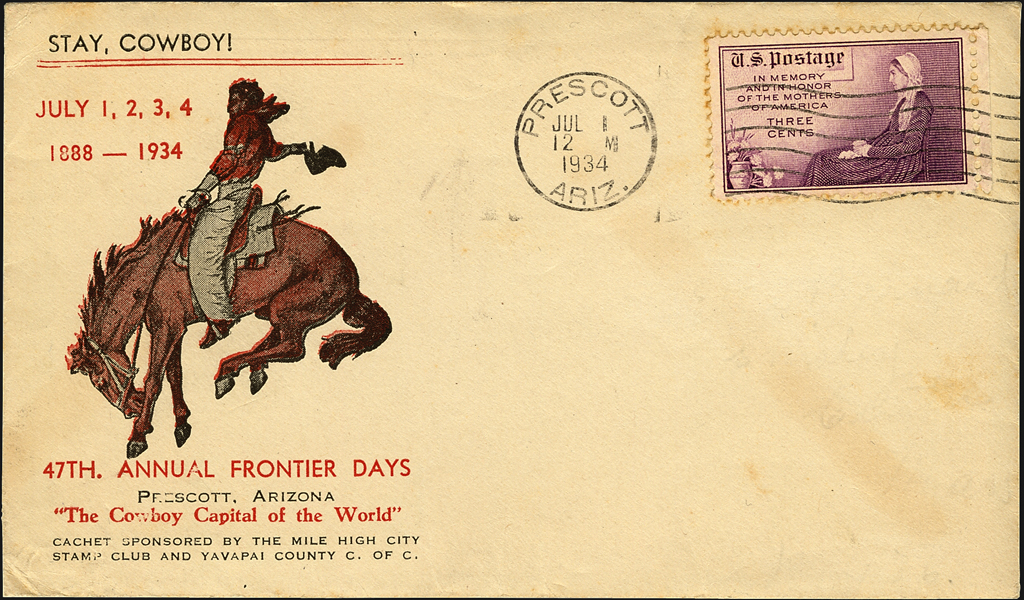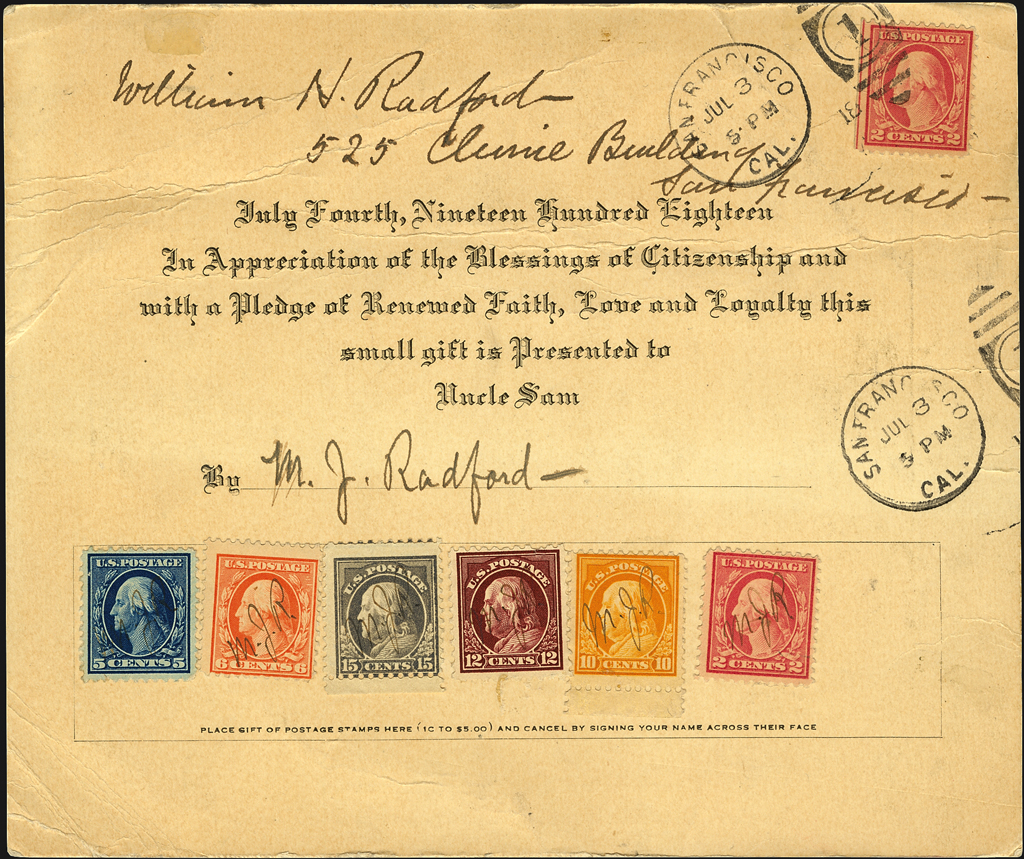US Stamps
July 4, more than Independence Day in the history of the United States
By John M. Hotchner
In the United States, July 4 is celebrated as Independence Day in commemoration of the adopting of the Declaration of Independence on July 4, 1776.
These celebrations have taken many forms. An unusual one is the “gift” represented by the card shown nearby, probably aimed at helping to pay the costs of the United States’ involvement in World War I.
The card reads: “July Fourth, Nineteen Hundred Eighteen. In Appreciation of the Blessings of Citizenship and with a Pledge of Renewed Faith, Love and Loyalty this small gift is Presented to Uncle Sam.”
The sender purchased six stamps from the then-current definitive series with a total face value of 50¢, pasted them on the card and initialed them before sending the card through the mail to a family member.
Many cities and towns in the United States schedule summer events around the Fourth of July celebration.
A nice example is the 47th annual Frontier Days, which took place July 1-4, 1934, in Prescott, Ariz. A souvenir cover is shown.
In addition to the adoption of the Declaration of Independence, a good many other historical events worth taking note of have occurred in the United States on July 4. Two covers dated July 4, 1926 and 1934, respectively, mention a few of these events.
The 1926 cover is a 2¢ carmine Washington stamped envelope canceled in Manhattan, Nev.
It includes portraits of four U.S. presidents and mentions that two of them, John Adams and Thomas Jefferson, died on July 4, 1826. James Monroe passed away five years later, on July 4, 1831. The fourth president shown, Calvin Coolidge, was born July 4, 1872.
The 1934 cover, sent from Philadelphia, is franked with a pair of 1½¢ Harding stamps. In addition to the Declaration and the aforementioned presidential deaths and birth, the list of July 4 events inscribed on this cover includes:
1778, Wyoming Valley Massacre;
1848, treaty with Mexico signed, and Washington Monument begun;
1863, General Grant captures Vicksburg;
1865, United States-China treaty;
1884, Statue of Liberty presented to the United States;
1894, Hawaii declared a republic;
1903, United States-Philippine cable completed.
Since the list on the cover stops at 1903, I began to wonder: If a similar cover was created today, what might be added?
Courtesy of Google, I find that three columns of small print on a legal-size cover would be needed; not just for 1904 onward, but for earlier events left off the 1926 and 1934 covers.
Some highlights include:
1636, city of Providence, Rhode Island, established;
1796, first Independence Day celebration held;
1802, U.S. Military Academy officially opens at West Point, N.Y.;
1803, Louisiana Purchase is announced;
1817, construction on Erie Canal begins;
1827, slavery abolished in New York;
1832, America is first sung publicly, Boston;
1836, Wisconsin Territory forms;
1845, Henry David Thoreau moves into his shack on Walden Pond, and Texas Congress votes for annexation to the United States;
1863, General Lee’s army withdraws from Gettysburg;
1876, first public exhibition of electric lights, San Francisco;
1881, Booker T. Washington establishes Tuskegee Institute;
1882, Buffalo Bill Cody presents the first Wild West Show, North Platte, Neb.;
1888, first organized rodeo competition held, Prescott, Ariz. (now part of the aforementioned Frontier Days events);
1895, Katherine Lee Bates publishes America the Beautiful;
1933, work begins on the Oakland Bay Bridge;
1934, Leo Szilard patents the chain-reaction design for the atomic bomb;
1946, Philippines gains independence from the United States;
1950, President Harry Truman signs Public Law 600 allowing Puerto Rico to write its own constitution, and the first broadcast by Radio Free Europe;
1959, America’s new 49-star flag honoring Alaska Statehood unfurled;
1960, America’s new 50-star flag honoring Hawaii Statehood unfurled;
1966, President Lyndon Johnson signs the Freedom of Information Act;
1997, Pathfinder lands on Mars.
Many of these events can be illustrated with stamps, as shown by six examples. It might make an interesting one-frame exhibit.
MORE RELATED ARTICLES
Headlines
-
US Stamps
Oct 9, 2024, 3 PMProspectus available for Pipex 2025
-
US Stamps
Oct 9, 2024, 2 PMGratitude for Denise McCarty’s 43-year career with Linn’s
-
US Stamps
Oct 9, 2024, 12 PMWorld’s first butterfly topical stamp in strong demand
-
World Stamps
Oct 8, 2024, 3 PMRoyal Mail’s Oct. 1 definitive meets new international standard rate









